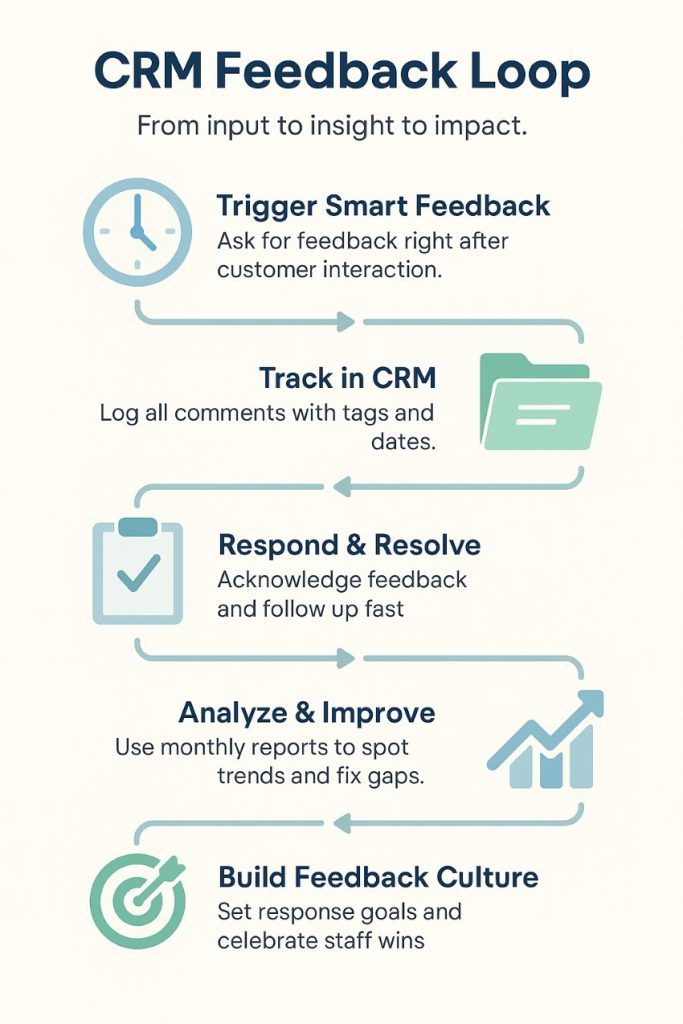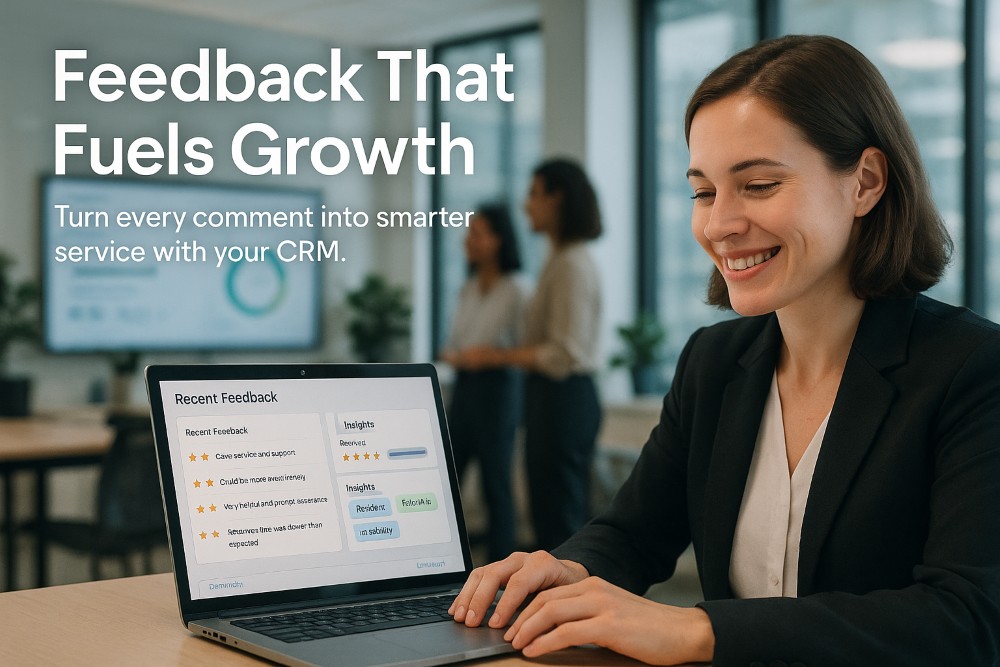If you’re only using your CRM to track sales, you’re leaving value on the table. Customer feedback tells you what’s working and what’s broken. It shows how people really feel
If you’re only using your CRM to track sales, you’re leaving value on the table. Customer feedback tells you what’s working and what’s broken. It shows how people really feel about your business. And it helps you fix problems before they get loud.
Too many companies only react when there’s a negative review. That’s backwards. Your CRM should help you collect, manage, and act on customer feedback in real time. Not just reviews—every comment, concern, and suggestion.
What Most Businesses Miss
The biggest mistake? Waiting for customer feedback to happen. Most people won’t speak up unless they’re really happy or really upset. You miss everything in between.
A 2023 BrightLocal study found that while 87% of people read online reviews, only 10% write them. That same ratio applies to direct feedback. You have to ask. And track.
“Customer feedback is one of the most underused assets in business,” says Sunil Jagani, President and CTO of AllianceTek. “When you integrate feedback into your CRM, you’re not just tracking satisfaction. You’re creating a live loop that helps shape better products, better service, and smarter decisions.”
Step One: Ask the Right Way
Use CRM Triggers for Timing
Your CRM knows when a purchase was made, a service delivered, or a project completed. Use that to your advantage. Send a message 1 to 2 days later asking for feedback. Keep it short and human.
“Thanks for choosing us. Got a minute to share how it went?”
Include a form or link. Make it easy. You’ll catch people while the experience is still fresh.
Personalise the Ask
Match the timing to the moment. If they had a smooth delivery or quick resolution, ask right then. If they had issues, wait until it’s resolved.
You want customer feedback that reflects the full journey, not just a reaction to a delay or glitch.

Step Two: Track It All in One Place
Create a Customer Feedback Section in Your CRM
Add a tab for feedback on each customer profile. It should include:
- Feedback type
- Date
- Source (form, email, review site)
- Summary
- Follow-up needed
You’ll be able to see patterns over time. No more scattered notes or guesswork.
Tag and Segment
Tag people who leave useful feedback. Tag those with complaints. Tag people who are superfans. This lets you create segments for outreach, improvement, and follow-up.
One service brand used this to build a "power users" list. Those users got early access to new features and were invited to private beta tests.
Step Three: Respond and Resolve
Acknowledge Every Message
If someone took time to share feedback, respond. Even if it’s just a thank you. Show them they were heard.
If it’s negative, don’t defend. Fix it. Move the conversation offline if needed.
“We appreciate the heads-up, James. We’re already working on a fix. Can we email you with more details?”
Track that in the CRM. If they leave a review later, link it. If they revise a bad review, mark it. Knowing how to remove a Google review can help too if the comment violates platform policy.
Train Your Team to Use It
Teach staff to log comments, not just calls or emails. If a customer says something useful on a support call, write it down. That’s data.
Step Four: Use It to Drive Change
Monthly Customer Feedback Reports
Every month, run a report on all feedback in your CRM. Look for themes. Are people confused about a feature? Raving about a team member? Struggling with your checkout?
Share the trends. Fix what’s broken. Double down on what’s working.
Route Feedback Internally
Share praise with your support or ops teams. Forward concerns to product or sales. Make sure feedback goes where it can be acted on.
CRM tools can help automate this. Use workflows or tags to route things quickly.
Step Five: Make Feedback Culture Normal
Set Goals
Don’t just track NPS or CSAT. Track how much feedback you’re collecting. Make it a team metric.
“100 responses this month” is a real number. Celebrate when you hit it.
Share the Wins
When a customer shouts out a staff member, tell the team. Give a bonus or public thank you. Make feedback part of morale, not just management.
Keep It Visible
Put customer quotes on screens, dashboards, internal newsletters. Remind everyone who you serve.
Watch Out for Feedback Fatigue
While customer feedback is powerful, don’t overdo it. Bombarding customers with too many surveys or review requests can backfire. People want to be heard, not hounded.
Stick to one ask per interaction. If you’re already sending a post-purchase email, don’t follow it with another asking for a rating, then another asking for a testimonial. Combine your requests and make them easy to complete in under a minute.
Also, be selective. Not every one needs to be asked for a customer feedback every time. Use your CRM data to avoid repeat asks. If someone left feedback last month, give them space. Focus instead on customers with new experiences to share.
One brand we worked with set a 60-day window between asks in their CRM. Engagement went up. Complaints dropped. And the feedback they got was more thoughtful.
The goal isn’t just more feedback. It’s better feedback. Honest, timely, and useful. If you respect your customers’ time, they’re more likely to share insights that actually help you grow.

Final Tips for Better Customer Feedback Flow
Use QR Codes
Put a QR code on receipts, packaging, or store windows that links to a feedback form. Simple and effective.
Add Feedback Links to Email Footers
A soft ask in every email keeps the door open. “Got feedback? We’re all ears.”
Automate What You Can
Use tools like Birdeye, Podium, or NiceJob to send review requests and sync results with your CRM.
👉 Protect your brand by promptly addressing issues like removing Google security warnings, which can impact customer trust and feedback quality.
Closing Thought
Good customer feedback isn’t just data. It’s insight. It’s improvement. It’s retention.
Your CRM can become the engine for that. Ask at the right time. Capture the right info. Share it with the right people. And treat every message like a chance to do better.
Respond to this article with emojis






